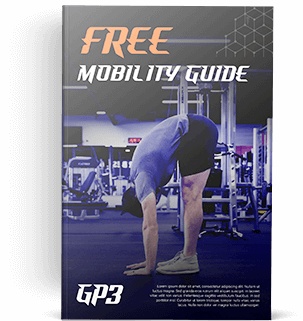Key Points:
1. Fitness and finance have so many parallels that it’s almost scary.
2. Developing our skills in these areas is arguably vital for success in the modern world, yet most people struggle mightily with one or both.
3. Insufficient education is far more to blame for this than individual choices and character traits.
Estimated reading time: 5-10 minutes
Listen to this article on Spotify!
I’ve wanted to write this post for a long time, and early in “Resolution Season” seemed like the perfect opportunity due to the prevalence of fitness and finance goals. They have so many parallels that it’s almost impossible to ignore, and this makes sense. Few areas require us to develop skills (whether we like it or not) in order to function optimally. Of course, we don’t really have to do anything we don’t want to do, but unless we choose the path of the renunciate, we’re probably better served by developing abilities in both disciplines.
Before we begin, I want to acknowledge that building our fitness and financial skills will require handling some discomfort. Both are easily intertwined with feelings of guilt, shame, and inadequacy, which are often rooted in early childhood experiences. Talk about an intense initial parallel. Before we wax too philosophical, however, let’s begin with one of my favorite analogies.
Credit Cards and Calories
As I’ve written before, I have a complicated relationship with counting calories. As a quick summary, this complication stems from it simultaneously being the only fat loss method guaranteed to work if done properly…but having so many stumbling blocks that it’s often ineffective and demotivating. To compound this paradox, I also believe everyone should try meticulous calorie tracking for a month or two, and then probably never do it again. Like I said, it’s complicated.
So, what the heck does this have to do with credit cards?
Well, the aforementioned barriers to counting calories properly have led many people to conclude that the method itself doesn’t work. While this isn’t true, I sympathize with their frustration. Research shows we’re notoriously bad at accurately tracking our own consumption, and credit card spending can help illustrate that.
The average U.S. household carries roughly $6,000 in credit card debt. This indicates an underlying issue with spending, but we’ll leave that aside for the moment. For now, regardless of whether we rack up the interest charges each month or always pay off the balance in full, we can probably relate to having had an experience like this…
We check a monthly statement balance and immediately think, “What?! There’s no way that can be right. The credit card company must have made a mistake!” We then scroll through the charges and think, “Oh, I remember this one. And yeah, that one too. Wait, hmm, I guess I did buy those tickets this month, huh?”
The Invisible Ledger
After some mental (or calculator) math, we’re forced to conclude that there hadn’t actually been a mistake–we just didn’t remember how much we’d spent. Well, tracking calories is kind of like that. Our body does it perfectly. But…we never get to see the ledger. Even further, the most obvious equivalent to a “nutritional ledger” we have, the scale, is somewhat of an unreliable narrator. But I’m going to talk about that more in a future post.
Given what I mentioned in the previous paragraph about the current state of credit card debt, imagine how much worse it would be if we had to guess how much we needed to pay at the end of each month. Now suppose it was even more like tracking calories and most of us didn’t even look at the prices of what we bought.
Were all of this the case, I feel safe in assuming that the average debt would be much higher. The similarities between fitness and finance don’t end here, though.
Budgets and overconsumption
Fundamentally, fitness and finance are matters of equilibrium. Not only that, this equilibrium can be manipulated based on our goals. For example:
- Deliberately decreasing our intake benefits us when we want to reduce our body fat percentage or save more money.
- Balancing our budget is quite similar to figuring out which meals help us maintain our desired weight.
- Controlled overconsumption strategies like calorie cycling and leveraging debt to pursue new business opportunities both counter mainstream advice and should only be attempted when we know what we’re doing.
In the same vein, our metabolism functions as our “calorie salary.” Someone with a resting metabolic rate of 2,500 calories per day has more room for nutritional flexibility than someone with with an RMR of 1,200. Ditto for the spending and saving capacity of someone with an average monthly income of $20,000 vs. someone with $4,000.
Further, an all-too-common default state in both spending and eating is mild to moderate overconsumption. And this overconsumption has consequences. Both debt and excess body fat can drain our physical and mental energy and negatively affect how individuals and institutions treat us. They come with decreased privileges, reduced access to opportunities, and even being generally looked down upon by society at large. Let me be clear. This isn’t fair, but it is unfortunately our current reality.
Let’s pause there for a moment.
Regarding financial health, over one-third of Americans carry a revolving balance each month despite the average credit card interest rate sitting at a downright predatory 20%. Regarding fitness, 42% of Americans are considered obese. In the West, we tend to unhelpfully blame this on character flaws like “a lack of discipline.” Personally, I believe systemic issues like inadequate education and lack of access to nutritious food are far more culpable, but I still find this assignment of blame interesting. If this many people aren’t doing remotely well at two vital skills, doesn’t that suggest we shouldn’t blame the players, but the game?
Let me elaborate.
Passive Income, Passive Body
In Thomas Piketty’s fantastic, weighty tome, Capital in the 20th Century, he makes a striking comparison. The average person who invests in the stock market in a typical year can expect a post-inflation return of 7%. That’s pretty solid. If all goes well, that level of return can easily lead to a couple decades of a comfortable, work-free retirement. However, these figures aren’t the same for the ultra-rich.
Someone with a net worth of 500 million dollars or greater can expect an average annual post-inflation return of 10%. If that doesn’t seem like a big difference, let me assure you, it’s massive. To compare, someone with an investment portfolio of $100,000 could expect their net worth to increase by $7,000 over the course of a year. Neat, right? They received well over the monthly median income for doing nothing. Hard to complain about that.
However, someone with a one billion dollar investment portfolio can expect to receive…one hundred million dollars, each year…for doing nothing. It felt absurd even to write that. Their investments can generate magnitudes more than most people will spend in a lifetime…every 365 days.
So…what does this have to do with fitness?
Well, the parallel extends to people who have been able to devote 10-20 hours per week (for ten or more years) to working out effectively. Just like with compound interest, the effects are multiplied if they’ve done this in their teens and early twenties. Allow me to paraphrase marketing influencer Alex Hormozi when asked how he maintains a world-class physique in his thirties.
“People are often surprised by how little I work out these days. I put the reps in when I was younger, spending hours in the gym five or six days a week, so now I don’t have to. I’m able to maintain this with only a couple hours each week. Everybody wants passive income, right? The same concept applies to fitness. Put the work in when you’re young and enjoy the benefits of your ‘passive body’ when you hit 30.”
Reductions in body fat percentage follow a similar principle. Dropping from 35% to 30% body fat will be far less noticeable than decreasing from 15% to 10%. It seems that in both capitalism and weight loss, the obvious rewards are greater for those whose need is lower.
More on investing
Just like most Americans don’t invest, most also don’t exercise enough. This means they’re locked out of two of the most powerful health and wealth building opportunities that exist: the stock market and the gym. It’s a gross oversimplification to say that not engaging in these two activities is the cause, but for too many Americans, the wealth outlook and health outcomes are undeniably getting worse.
To be clear, I don’t blame anyone who doesn’t work out or doesn’t invest. Few of us are educated early enough about the benefits or given the opportunity to build optimal financial and fitness habits, Yes, resources are more readily available now, and it’s certainly possible to progress from zero knowledge about these topics to a practiced expert. But this doesn’t happen automatically. Usually, something has to happen to spark our interest.
For me, soccer and a horrific back injury led to a lifelong interest in physical improvement, while my disdain for the tedious tyranny of corporate bull**** led me to say, “No friggin’ way I’m doing this for 40 years.” So, I learned about investing.
But, not everyone has similar curiosity-sparking experiences. To a novice, finance and fitness can easily appear to be a powerfully off-putting combination of complicated, intimidating, and boring. Ideally, school should be the venue where we learn about our wealth and our health, as well as start building the skills that will come in handy for our entire lives. Sadly, that’s not yet the case.
Well, this was predictable…
I should have known this would turn into a two-parter. We haven’t even discussed the relationship of money and food to feelings of guilt and shame, or early childhood relationship dynamics. For now, I’ll wrap up by simply pointing out that the goal behind writing this piece is merely to raise interest and draw some (hopefully) interesting parallels.
If you struggle with your fitness and your finances, you’re not alone. Powerful societal forces and evolutionary conditioning stack the deck against you, but all hope isn’t lost. Education and compassionate self-examination offer equally potent ways to tip the scales back in your favor. It’s the latter that will be our main focus next week. Until then, stay tuned!
Before you go, I’d love to hear from you! Which of these parallels between fitness and finance had you come across before? Which of the two do you feel provides a bigger challenge in your life, and what have you tried to do about it? Reply to this email and let me know!

